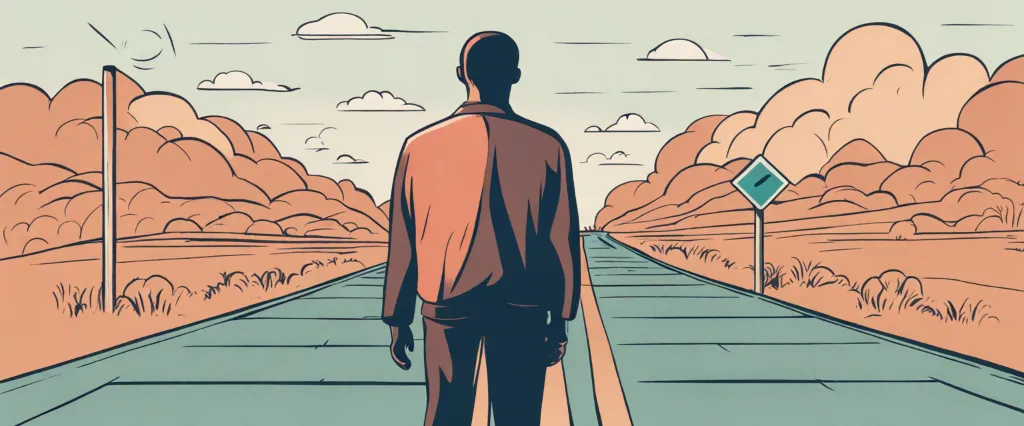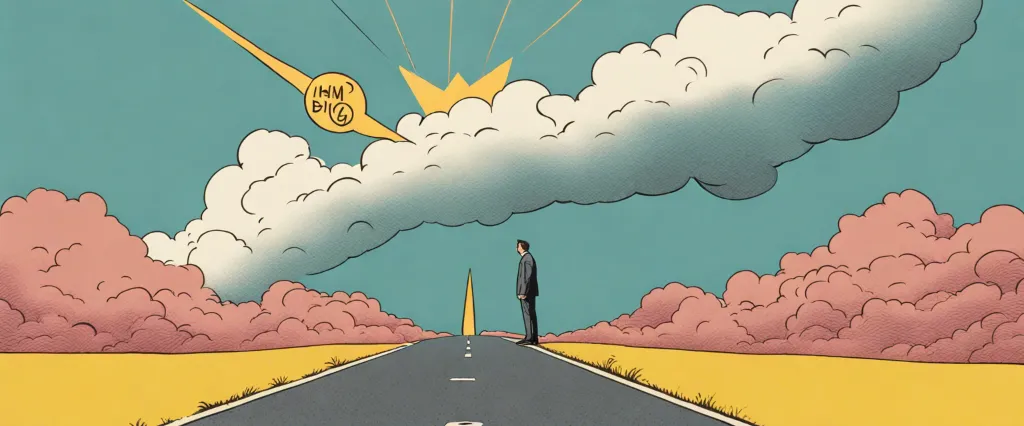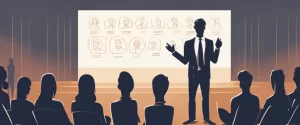
In the vast realm of self-help literature, countless authors have dedicated their work to guiding individuals towards personal growth, fulfillment, and success. Among this trove of wisdom, two remarkable books stand out as beacons of insight and guidance: “The Big Leap” by Gay Hendricks and “Leading On Empty” by Wayne Cordeiro. While each of these acclaimed works delves into the human experience and offers transformative perspectives, they do so through different lenses, unraveling distinct facets of personal and professional development.
“The Big Leap,” penned by Gay Hendricks, illuminates the barriers that hinder individuals from fully realizing their potential and achieving lasting happiness. Drawing upon his extensive experience as a psychotherapist and relationship counselor, Hendricks explores an intriguing concept known as the “Upper Limit Problem.” Through thought-provoking anecdotes and practical strategies, he invites readers on a transformative journey, encouraging them to transcend their self-imposed limitations and embrace a life of abundance, joy, and purpose. By unraveling the subtle patterns of self-sabotage and unveiling the innate capacity for personal growth, Hendricks equips his readers with invaluable tools to make the big leaps necessary for a truly fulfilling existence.
In contrast, Wayne Cordeiro’s “Leading On Empty” approaches the pursuit of personal growth from the perspective of leadership and its toll on the individual’s overall well-being. Cordeiro, a renowned pastor and leadership expert, casts a compassionate light on the often-neglected aspect of leadership exhaustion and burnout. With profound vulnerability, he shares his firsthand experiences, shedding light on the crippling consequences of limitless ambition and relentless dedication. With wisdom gleaned from his own personal journey of recovery, Cordeiro offers practical strategies and spiritual insights to help leaders restore balance, reclaim their vitality, and lead from a place of genuine authenticity.
While both “The Big Leap” and “Leading On Empty” share the common thread of inspiring personal growth, their differing approaches and distinct focal points create a rich tapestry of wisdom. In this comparative study, we will delve into the unique insights offered by each author, exploring the causes and manifestations of self-imposed limitations as well as the dire consequences of leadership burnout. By examining the themes, strategies, and practical applications presented in these remarkable works, we aim to unearth the underlying truths that propel individuals towards a more fulfilling and purpose-driven life.
At the crossroads of breaking boundaries and preserving vitality, “The Big Leap” and “Leading On Empty” are poised to ignite transformative journeys, illuminating the paths towards greater personal empowerment, authentic leadership, and unyielding joy. Join us on this captivating exploration as we delve into the pages of these two profound works and discover the exceptional wisdom they hold within.
Brief Summary of Two Books
The Big Leap by Gay Hendricks
“The Big Leap” by Gay Hendricks is a self-help book that encourages readers to overcome their fears and limitations in order to reach their full potential. The central theme of the book revolves around the concept of the “Upper Limit Problem,” which refers to the self-imposed limitations individuals place on themselves that prevent them from experiencing true success and happiness.
Hendricks believes that everyone has a personal comfort zone, a range within which they feel comfortable and safe. However, when an individual begins to exceed that range and experience heightened levels of success and happiness, they often self-sabotage and revert back to their comfort zone. This phenomenon occurs due to deeply ingrained beliefs that an individual does not deserve success or that achieving it will lead to negative consequences.
To break through these self-imposed limits, Hendricks presents four key principles. The first principle is to recognize and accept the Upper Limit Problem. By understanding the patterns and behaviors that hold us back, we can start to overcome them. The second principle encourages individuals to develop self-awareness and become conscious of their thoughts and actions. Increasing awareness allows for the identification and dissolution of limiting beliefs. The third principle involves taking personal responsibility for one’s emotions and experiences, which empowers individuals to create positive change in their lives. Finally, Hendricks emphasizes the importance of living in the “Zone of Genius,” where individuals can fully utilize their unique talents and passions.
Through engaging stories, practical exercises, and insightful advice, Hendricks guides readers towards breaking through their self-imposed limitations and achieving greater levels of success, abundance, and happiness. Ultimately, “The Big Leap” provides a roadmap for personal transformation and encourages individuals to embrace a life filled with purpose, joy, and fulfillment.
Leading On Empty by Wayne Cordeiro
“Leading On Empty” by Wayne Cordeiro is a book that delves into the topic of burnout among leaders, particularly those in Christian ministry. Cordeiro, who is a minister himself, shares his own experiences of reaching a point of physical, emotional, and spiritual exhaustion.
The book explores the reasons behind burnout, highlighting the excessive demands and pressures faced by leaders in ministry. Cordeiro emphasizes the importance of self-care and addresses various areas that contribute to burnout, such as neglecting personal relationships, failing to establish boundaries, and lacking a balanced lifestyle.
Throughout the book, Cordeiro provides tools and insights for leaders to identify the warning signs of burnout and offers practical strategies to prevent and overcome it. He encourages leaders to prioritize their own well-being, cultivate healthy habits, and find ways to recharge physically, emotionally, and spiritually.
Cordeiro also emphasizes the need for leaders to rely on God’s strength and to seek support from their community. Drawing from his own experiences, he offers guidance on creating a support system and finding accountability partners who can provide encouragement and hold them accountable.
In summary, “Leading On Empty” is a book that addresses the prevalent issue of burnout among leaders, particularly in the context of Christian ministry. It provides insights, strategies, and encouragement to help leaders recognize and address burnout, ultimately leading to greater effectiveness and long-term sustainability in their leadership roles.
Comparison between Two Books

Similarities in Psychology
Both “The Big Leap” by Gay Hendricks and “Leading On Empty” by Wayne Cordeiro delve into the realm of psychology, focusing on personal growth, self-awareness, and the exploration of deep-seated psychological patterns. Despite their different contexts (The Big Leap primarily deals with personal fulfillment and success in various areas of life, while Leading On Empty centers around the challenges faced by leaders), both books highlight key similarities in their psychological perspectives.
1. Limiting beliefs and fear: Both books emphasize the role of limiting beliefs and fear in holding individuals back from reaching their true potential. They explore how these psychological barriers can hinder personal growth and success, urging readers to identify and overcome them.
2. Self-reflection and introspection: Hendricks and Cordeiro stress the importance of self-reflection and introspection in understanding ourselves better. They encourage readers to engage in deep self-examination, uncovering hidden patterns, and exploring the root causes of their behaviors and beliefs.
3. The power of mindset: Both authors recognize the profound impact that mindset and mental attitude have on personal development. They emphasize the need to cultivate a positive mindset and shift from a scarcity mentality to one of abundance, opening up possibilities for growth and improvement.
4. Identifying and challenging resistance: Hendricks and Cordeiro advocate for recognizing and challenging resistance. They explore the ways individuals often sabotage their own success and provide strategies for overcoming resistance, such as developing a growth mindset and adopting empowering beliefs.
5. Emotional intelligence: Both books touch on the importance of emotional intelligence. They highlight the significance of understanding and managing one’s emotions for overall well-being and effective leadership.
6. Empowering self-talk: Hendricks and Cordeiro emphasize the power of positive self-talk and affirmations. They argue that changing one’s internal dialogue can significantly impact one’s mindset, beliefs, and ultimately, their experiences.
7. The role of self-care: Both books stress the importance of self-care and prioritizing one’s well-being. They highlight the need for individuals, especially leaders, to maintain physical, emotional, and spiritual health as a foundation for personal growth and success.
In summary, “The Big Leap” and “Leading On Empty” explore various psychological concepts, including limiting beliefs, mindset, self-reflection, emotional intelligence, and self-care. They provide practical tools and insights to help individuals navigate psychological challenges and foster personal growth.
Divergences in Psychology
The Big Leap by Gay Hendricks and Leading On Empty by Wayne Cordeiro are both self-help books that offer guidance on personal and professional development. While they share similarities in their purpose, there are significant divergences in their approach to psychology.
1. Focus on Individual Psychology vs. Relating to Others:
One major divergence is the focus of the books when it comes to psychology. In The Big Leap, Hendricks primarily emphasizes individual psychology and personal growth. He explores topics such as limiting beliefs, self-sabotage, and overcoming fears within oneself. On the other hand, Leading On Empty by Cordeiro emphasizes the importance of psychology in understanding and relating to others, specifically in the context of leadership. Cordeiro dives into topics like emotional intelligence, communication, and building healthy relationships to become an effective leader.
2. Overcoming Internal Barriers vs. Dealing with External Pressures:
Another significant divergence lies in the source of the psychological challenges addressed in the books. In The Big Leap, Hendricks focuses on breaking free from internal barriers that hinder personal growth and success. He encourages individuals to identify and overcome self-imposed limitations, ultimately reaching their full potential. Conversely, Leading On Empty by Cordeiro delves into the pressures that external circumstances, such as leadership roles, can impose on individuals. Cordeiro provides insights into managing stress, avoiding burnout, and finding fulfillment amidst the demands of leadership.
3. Discovering True Potential vs. Nurturing Spiritual Growth:
While both books touch upon personal development, their emphasis on aspects beyond psychological growth diverge. In The Big Leap, Hendricks encourages readers to tap into their true potential and find a sense of purpose and joy in their lives. He offers strategies to overcome self-doubt, embrace abundance, and live a fulfilled life. On the contrary, Leading On Empty by Cordeiro delves deeper into spiritual growth as a way to combat emotional emptiness and find fulfillment. Cordeiro emphasizes the importance of strengthening one’s relationship with God, relying on faith, and gaining inner strength through spiritual practices.
In summary, the divergence between The Big Leap and Leading On Empty lies in their approach to psychology. Hendricks’ book focuses on individual psychology and personal growth, addressing internal barriers to success, whereas Cordeiro’s book centers on psychology in relation to others, emphasizing leadership and external pressures. Additionally, The Big Leap focuses on discovering true potential, while Leading On Empty delves into nurturing spiritual growth.

Conclusion
Both “The Big Leap” by Gay Hendricks and “Leading On Empty” by Wayne Cordeiro are highly rated and impactful books in their respective genres. Ultimately, the choice between the two depends on your personal interests and goals.
“The Big Leap” delves into the concept of identifying and overcoming self-imposed limitations, helping individuals recognize their unique abilities and achieve their full potential. It offers practical strategies for moving beyond fear and self-sabotage, allowing readers to create a life of abundance and fulfillment.
“Leading On Empty” focuses on the challenges faced by leaders and pastors, exploring the concept of burnout and offering strategies for managing stress, establishing healthy boundaries, and maintaining a sustainable pace. This book is particularly relevant for individuals in leadership positions or those involved in ministry.
Therefore, if you are seeking personal growth, overcoming limitations, and maximizing your potential, “The Big Leap” may be the more suitable read for you. On the other hand, if you are a leader looking to prevent burnout, establish healthy habits, and find balance in your work and personal life, “Leading On Empty” could be the more beneficial choice.
It is worth noting that both books have received positive reviews and have influenced many individuals in their respective fields, so picking either one will likely provide valuable insights and guidance.


